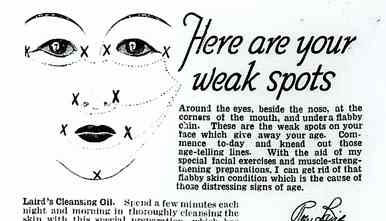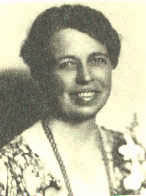
Portion of the Declaration of Independence, 4 July 1776
Library of Congress LC-USA7-951
| The USA was the first modern democracy and republic, declaring its independence from Britain in 1776 and achieving independence in 1783. The USA has a federal system of government. Each of the 50 states has its own government and there is an overall national, or federal government based in Washington DC. Women were centrally involved in the movement to achieve Civil Rights for black people in the USA in the mid twentieth century. A powerful movement to achieve liberation for women developed in the USA in the 1960s and spread to other parts of the world. |
Influences from the US
When John Adams was drafting the American Declaration of Independence in 1776, he refused a request from his wife Abigail Adams to 'Remember the Ladies.'
| ... I long to hear that you have declared an independancy - and by the way in the new Code of Laws which I suppose it will be necessary for you to make I desire you would Remember the Ladies, and be more generous and favourable to them than your ancestors. Do not put such unlimited power into the hands of Husbands. Remember all Men would be tyrants if they could ... Abigail Adams to John Adams ... Depend upon it, We know better than to repeal our Masculine systems. Although they are in full Force, you know they are little more than Theory. ... We have only the Name of Masters, and rather than give up this, which would completely subject Us to the Despotism of the Petticoat, I hope General Washington, and all our brave Heroes would fight ... John Adams to Abigail Adams. Quoted in Mary Beth Norton (ed.), Major problems in American women's history. Lexington, 1989, p.83. |

Portion of the Declaration of Independence, 4 July 1776
Library of Congress LC-USA7-951
Individual states differed on the issue of women's suffrage in the nineteenth century. Women could vote in Wyoming, nicknamed 'Equality State' in 1869. However, amendments to the US Constitution in the 1860s defined citizens as 'male' and gave the federal vote to black men but not to any women.
Many women took active parts in anti-slavery movements where they learned leadership roles and practical politics. Such a woman was Elizabeth Cady Stanton who proposed equal suffrage for women and men at the First Women's Rights Convention at Seneca Falls, New York, in 1848. An international Woman Suffrage Alliance was formed in 1902. After a long struggle, women gained the right to vote in the US in 1920 by the Nineteenth Amendment to the Constitution. It was called the Susan B. Anthony Amendment after a women's rights leader who had composed it in 1878.
In the 1900s, the consumer society developed. The film industry, advertisers and magazines targeted women customers as they marketed cosmetics, hygiene products and 'flapper' fashion, emphasising the concept of female beauty. They advised women how to get and keep a man, achieve the perfect marriage and children and acquire the ideal home with modern appliances. Women were offered a lifetime of spending, if not of earning.
|
Similarly, advertisers linked sexual attractiveness with marital prospects: |

Cosmetics advertisement. Mid twentieth century magazine
When the optimism of the 'Roaring Twenties' gave way to the Great Depression of the 1930s, severe unemployment and poverty were the reality for millions of women and men. FD Roosevelt was elected President in 1932 promising a social welfare New Deal. His wife Eleanor Roosevelt, active in women's organisations, had helped shape this policy and Roosevelt appointed Frances Perkins the first woman Cabinet Minister at the Department of Labor.
Eleanor Roosevelt was mindful of the rights of women when she chaired the commission that drafted the UN Universal Declaration on Human Rights in 1948.
 Eleanor Roosevelt Library of Congress LC-USZ62-108091 |
Article 1. Article 2. |
President John F. Kennedy appointed Eleanor Roosevelt to chair a Presidential Commission on the Status of Women which published its report in 1963 and was followed by an Equal Pay Act and several other reforms for women in the USA.
While politicians were dealing with women's grievances in the United States in the 1960s, a popular feminist movement sprang up. It concentrated more on protest, on self-expression and on raising the awareness of those women who, it was claimed, did not realise how 'duped and trapped' they were. It became known as the Women's Liberation Movement and it was influenced by:
|
The moment many see as the birth of the civil rights movement came in the fall of 1955 in Montgomery, Alabama. Rosa Parks ... boarded the city bus feeling bone-weary. The 'colored' section at the back was full, so she sat at the rear of the 'white' section. When the rest of the bus filled, the driver angrily demanded that she give up her seat. Rosa Parks refused. Soon the black community buzzed with the news of her arrest. Joanne Robinson of the Local Women's Political Council ... immediately put into action the bus boycott she and her organization had discussed for more than a year ... Blacks in Montgomery walked, carpooled, and built an unshakable sense of community solidarity and pride. As one elderly black woman put it, when offered a ride by a white reporter: 'No, my feets is tired but my soul is rested.' |
Betty Friedan's Feminine Mystique described some of the problems and dilemmas of women in the 1960s. She claimed that magazines, educators and advertisers had brainwashed women into thinking happiness could be attained no other way than through marriage, motherhood and homemaking. But all the time, she stated, society was pursuing other ends:
The result was that women who 'had it all' still felt, 'there must be more to life than this.'
| A mother of four who left college at nineteen to get married told me: 'I've tried everything women are supposed to do - hobbies, gardening, pickling, canning, being very social with my neighbours, joining committees, running PTA teas. I can do it all and I like it, but it doesn't leave you anything to think about - any feeling of who you are. I never had any career ambitions. All I wanted was to get married and have four children. I love the kids and Bob and my home. There's no problem you can even put a name to. But I'm desperate. I begin to feel I have no personality. I'm a server of food and a putter-on of pants and a bedmaker, somebody who can be called on when you want something. But who am I?' Betty Friedan, The Feminine Mystique, 1963, Chap. 1. |
Betty Friedan helped found the National Organization for Women (NOW) in 1966. By the 1970s, 'Women's Lib' had spread far and wide. 'Women's Libbers' (as they were derogatorily called) disrupted beauty contests; they held marches, demonstrations, rallies and strikes; they openly discussed subjects hitherto taboo such as rape, incest, domestic violence and several aspects of sexuality. Activities regarded by some as shocking and outrageous were reported and publicity was guaranteed. Women's Libbers were furiously criticised, condemned and ridiculed for being selfish, demanding, over-educated and unfeminine. However, questions were being asked, opinions hotly debated and women's issues and problems could no longer be taken for granted.
NOW and most other women's movements split eventually over issues such as social class, domesticity, racism, slavery, pornography and abortion. Neither did any perfect solutions emerge and some exploitation occurred. Active feminism had periods of expansion and contraction in America and elsewhere and inevitably, as with all movements, encountered 'backlashes' from time to time.
In 1981, Betty Friedan published The second stage, in which she urged women and men to work together to remove the political, economic and psychological barriers to greater personal fulfilment for themselves and for their children.
| The Salem witchcraft trial | Abigail Adams |
| Sojourner Truth | Elizabeth Cady Stanton |
| Susan B. Anthony | Carrie Chapman Catt |
| New Deal | Seneca Falls Convention, 1848 |
| Eleanor Roosevelt | Universal Declaration of Human Rights |
| Betty Friedan | Rosa Parks |